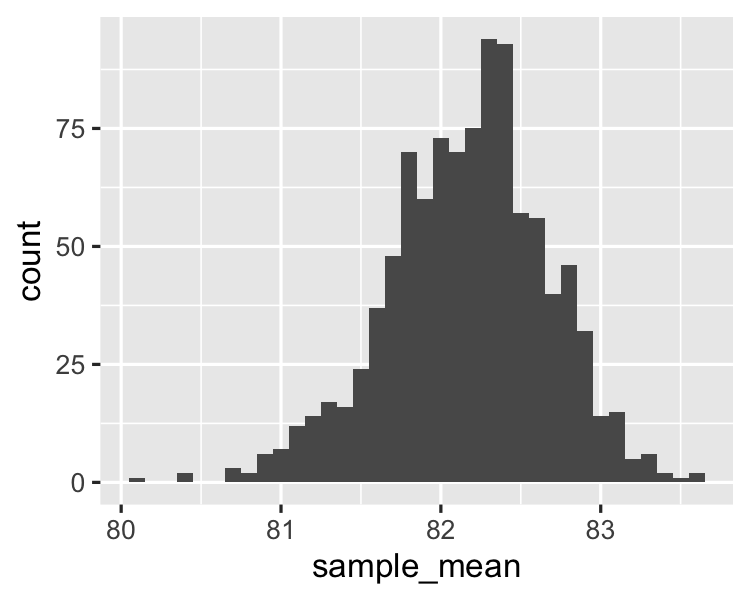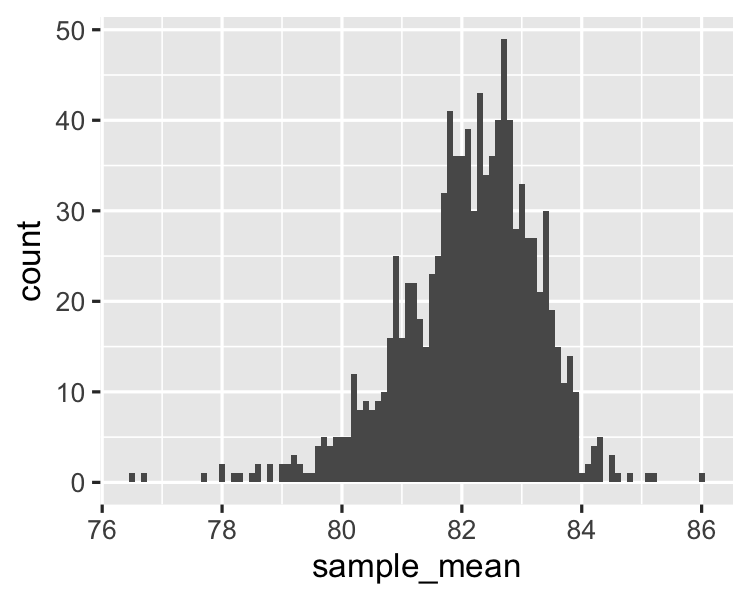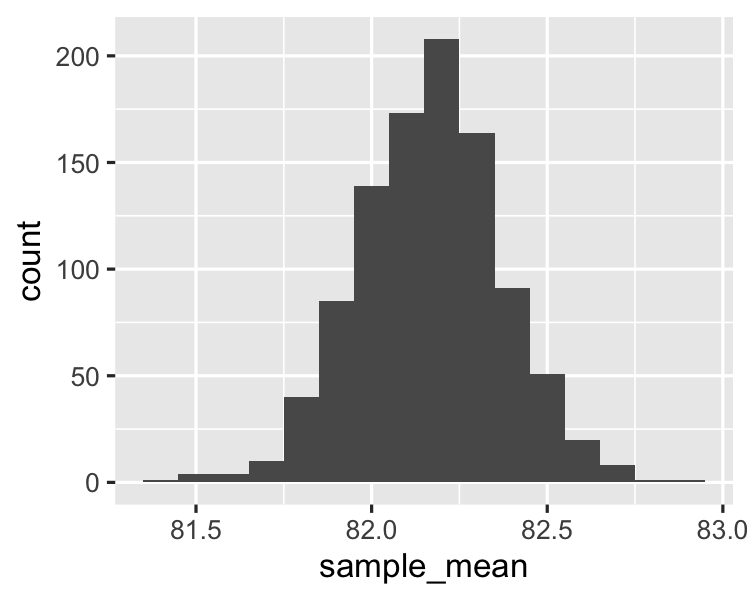Creating a sampling distribution
Sampling in R

Richie Cotton
Data Evangelist at DataCamp
Same code, different answer
coffee_ratings %>%
slice_sample(n = 30) %>%
summarize(mean_cup_points = mean(total_cup_points)) %>%
pull(mean_cup_points)
83.33
coffee_ratings %>%
slice_sample(n = 30) %>%
summarize(mean_cup_points = mean(total_cup_points)) %>%
pull(mean_cup_points)
82.59
coffee_ratings %>%
slice_sample(n = 30) %>%
summarize(mean_cup_points = mean(total_cup_points)) %>%
pull(mean_cup_points)
82.16
coffee_ratings %>%
slice_sample(n = 30) %>%
summarize(mean_cup_points = mean(total_cup_points)) %>%
pull(mean_cup_points)
82.25
Same code, 1000 times
mean_cup_points_1000 <- replicate(
n = 1000,
expr = coffee_ratings %>%
slice_sample(n = 30) %>%
summarize(
mean_cup_points = mean(total_cup_points)
) %>%
pull(mean_cup_points)
)
[1] 81.65 81.57 82.66 82.27 81.76 81.74 82.71
[8] 82.20 80.43 82.45 82.29 82.63 82.28 82.11
[15] 82.14 81.72 81.97 82.58 81.78 82.47 81.73
[22] 82.78 82.14 82.39 81.69 82.36 82.64 82.68
[29] 82.56 82.14 82.72 82.43 81.68 82.74 82.80
[36] 82.12 82.31 81.02 82.83 81.71 82.25 82.11
[43] 82.76 82.26 81.57 82.00 81.75 81.47 81.99
[50] 82.68 82.05 82.43 82.40 82.66 80.78 82.43
...
[967] 81.84 83.12 81.54 81.83 82.24 82.36 82.49
[974] 82.05 82.08 81.98 82.45 82.04 81.42 83.06
[981] 81.97 82.65 81.12 82.48 81.64 81.92 81.96
[988] 81.71 81.96 81.78 82.30 81.76 82.46 82.43
[995] 81.95 82.60 81.84 82.78 82.23 82.56
Preparing for plotting
library(tibble)
sample_means <- tibble(
sample_mean = mean_cup_points_1000
)
# A tibble: 1,000 x 1
sample_mean
<dbl>
1 83.3
2 82.6
3 82.2
4 82.2
5 81.7
6 81.6
7 82.7
8 82.3
9 81.8
10 81.7
# ... with 990 more rows
Distribution of sample means for size 30
ggplot(sample_means, aes(sample_mean)) +
geom_histogram(binwidth = 0.1)
A sampling distribution is a distribution of several replicates of point estimates.

Different sample sizes
Sample size 6

Sample size 150

Let's practice!
Sampling in R

